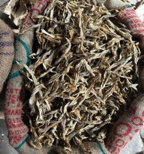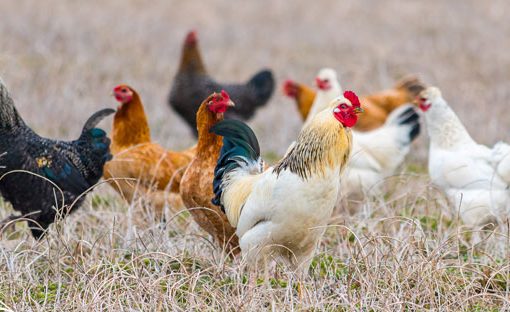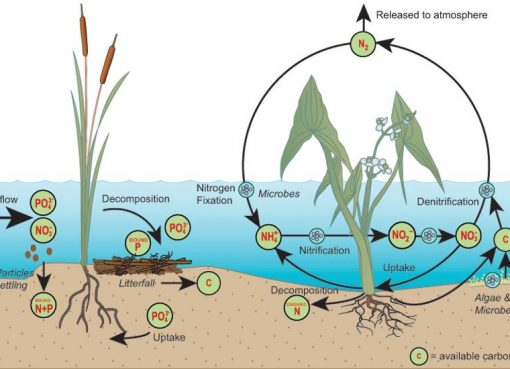Angshuman Saikia, Preety Sarmah, Habiba Easmin, Aishwarjyarani Saikia, Dr. Sarifuddin Ahmed
Department of Fish Processing Technology
College of Fisheries, Assam Agricultural University, Raha
Corresponding author: preetysarmah5@gmail.com
Abstract
Drying is one of the most commonly practiced methods of fish preservation in Assam and also one of the world’s oldest known preservation methods. Dried fish is a good source of proteins, minerals, and nutrients and therefore, it has a lot of significance for the poor and economically backward people. The Jagiroad Dry fish market of Morigaon district of Assam is one of the largest dry fish markets in Southeast Asia. It reportedly covers 30 acres of land and has more than 170 shops. The market encompasses both freshwater and marine species from various parts of the country. The market receives fish from diverse regions across India with significant contributions from Uttar Pradesh, West Bengal, Bihar, Gujarat, and Mumbai. Gujarat tops the list in the supply of dry fish to the market with nearly 58% of the arrivals. The market also has a significant role in providing livelihood to different households within the state and different people outside the state. The products from this market are subsequently distributed to different parts of the northeast states such as Nagaland, Mizoram, Manipur, Meghalaya, and Arunachal Pradesh. Different species of fish found in the market comprise mainly Bomla, Keski, Mackerel, Ilish, Mua, Bami, Tilapia, Kokila, Mali, Tura, etc. In this article, an overview of the Jagiroad Dry fish market has been given in context to its market channel, species diversification, and the problems encountered such as lack of infrastructure in maintaining quality products.
Keywords: Dry fish, species diversity, marketing, Northeast India, challenges
Introduction
In North-eastern India, dried fish is highly favoured and frequently eaten as a daily meal or to enhance the taste. Dried fish is also a good source of proteins, minerals, and nutrients and has a high importance for economically backward people for their daily requirements (Murray and Little, 2000).
In India and many tropical countries, dried fish products have a substantial market due to their low cost of production, transport, and storage (Yean, 1988). In Assam, although there is a gap between the demand of the fish-eating population and the supply of fish, a sizeable

quantity of fish is traditionally preserved by different methods such as salting, fermentation, and drying (Dutta et al., 1992). Drying is one of the most commonly practiced methods of fish preservation in our region and also one of the world’s oldest-known preservation methods (Govindan, 1985; Paul et al., 2018; Samanta et al., 2016).
Assam being a flood-prone area, a large number of fishes are being caught during the rainy season which are sold at a lower price due to its abundant availability and lack of sophisticated instruments for preservation. In such cases, drying of fish becomes an effective measure for the loss incurred by different fishermen during the flood season. The Jagiroad Dry fish market of Morigaon district of Assam plays an important role in providing the market for different dry fish species of Assam and other parts of India. It is considered one of the largest dry fish markets in the Southeast Asia for distribution of different dried fish species and other traditionally preserved fish products (Vijayan and Surendran, 2012). However, it was observed that due to the low quality of the dried fish produced in this region, the acceptability rate of such species becomes low and a majority of the species is being occupied by the different coastal areas of India.
Present status of the Jagiroad fish market:
The Jagiroad dry fish market, situated in the Morigaon district of Assam, India, reportedly covers 30 acres of land and has more than 170 shops. The market was set up in the year 1958 and it facilitates trading of a remarkable variety of dried fish, encompassing both freshwater and marine species. This includes fish sourced locally and imported from various states across the country. The market covers over 300 species of dry fish, sourced from various regions of India and Assam. Gujarat is a major supplier, contributing nearly 58% of the total arrivals. Studies suggest that nearly 70% of the market’s dried fish comes from imports (Deka et al., 2019). Dry fish from Jagiroad caters primarily to the Northeastern states and even reaches Bhutan, Malaysia, and other South Asian countries. Arunachal Pradesh is a major recipient within India. The marketing system within the market appears to be multifaceted, with variations depending on the origin of the fish (indigenous, cultured, or imported) (Deka et al., 2019). The availability of fish species exhibits significant seasonal variation with the greatest diversity observed during the winter months. Wholesale demand and supply data from respondents corroborate this trend, indicating a peak in activity during the winter season. The market is a significant source of livelihood, employing roughly 4,000 people directly or indirectly.
Seasonal Variations in Fish Supply and Their Impact on the Jagiroad Dry Fish Market:
The study identified Bombay duck, Puntius, and Prawns as the most sought-after dry fish varieties within the research area.
The demand for dried fish remains high in the winter season. During summer, the heat increases the risk of spoilage during the drying process leading to potential health hazards and product loss. This finding aligns with Hossain et al. (year), who suggested that consumer demand for dried fish products remains high throughout the year, particularly for marine varieties. However, the availability of dried freshwater fish exhibits greater seasonal fluctuations with peak availability occurring during the winter months.
Species diversity of the Jagiroad dry fish market:
| Local name | Scientific name | Wholesale Price |
| Bomla (Bombay duck) | Harpodon nehereus | 600 |
| Keski (River anchovy) | Corica soborna | |
| Mackerel | Rastrelliger kanagurta | 200-250 |
| Ilish | Tenualosa ilisha | 600-650 |
| Ari | Aorichthys aor | 250-300 |
| Mua | Amblypharyngodon mola | 80 |
| Bami | Mastacembelus armatus | 500 |
| Sardine | Sardinella longiceps | 200-250 |
| Kokila | Xenontodon cancila | 250 |
| Tilapia | Oreochromis niloticus | 150-170 |
| Puthi | Puntius sophore | 230-250 |
| Seni puthi | Puntius ticto | 100-120 |
| Kandhuli | Notopterus notopterus | 250-300 |
| Singri | Fenneropeneaus indicus | 150 |
| Bhagan | Labeo bata | 200-220 |
| Kuhi | Labeo gonius | 200 |
| Dorikana | Rasbora daniconius | 200 |
| Borali | Wallago attu | 300 |
| Goroi | Channa puntatus | 90 |
| Shawl | Channa striatus | 60-70 |
| Singhora | Mystus vittatus | 200-250 |
| Singhi | Heteropneutus fossilis | 300 |
| Karati | Gudusia chapra | 220-250 |
| Pabho | Ompok pabda | 700-800 |
| Shidol | Puntius spp. | 400 |
| Choori | Trichiurus lepturus | |
| Magur | Clarius magur | 500 |
| Mali | Labeo calbasu | 160-170 |
| Tura | Macrognathus puncalus | 800 |
Market Efficiency Across Different Channels in the Jagiroad Dry Fish Market
The study identified five distinct marketing channels through which dry fish products are distributed from producers to consumers. These channels involve different combinations of intermediaries such as assemblers, commission agents, wholesalers, and retailers.
According to a study by Kashyap et al. (2013), five distinct channels through which dried fish travels from producers to consumers were identified. The dominant channel (Channel I, 56.17%) involves a series of intermediaries: assemblers, commission agents, wholesalers, and retailers. Channel II (21.33%) is similar but excludes assemblers. Channel III (6.30%) utilizes a single intermediary who functions as both a wholesaler and commission agent. Channel IV (13.05%) is a simpler structure with just a wholesaler and retailer, while Channel V (3.15%) is the most direct, with dried fish moving from producers directly to wholesalers who then sell to consumers. Every channel is a distinct route that the dry fish products take from the producer to the final customer, passing via several middlemen like wholesalers, retailers, commission agents, and assemblers (Kashyap et al., 2013)
Despite Channel V being the most efficient in terms of marketing, with lower marketing costs and margins compared to other channels its market share in the total quantity of dry fish sold was relatively small. In contrast, Channel I was identified as the least efficient due to higher costs and margins. The study shows that channels with fewer intermediaries tended to have higher marketing efficiency and potentially offered producers more profit through reduced marketing chain length and enhanced overall efficiency in the dry fish industry.
In context to the Jagiroad dry fish market, the products from the market are subsequently distributed to adjacent states, including Nagaland, Mizoram, Manipur, Meghalaya, and Arunachal Pradesh, as well as various regions within Assam, such as Silchar, Karimganj, Nagaon, and Golpara. The market receives fish from diverse regions across India, with significant contributions from states such as Uttar Pradesh, West Bengal, Bihar, Gujarat, and Mumbai. Marine fish primarily originate from West Bengal and Gujarat. Additionally, dried fish products are exported to Southeast Asian countries, including Singapore and Malaysia.



Challenges in the Jagiroad Dry Fish Market:
The Jagiroad dry fish market, despite its prominence in Southeast Asia, faces significant challenges that impact product quality, profitability, and public health.
Hygiene and Storage Concerns: The market lacks proper sanitation and adequate storage facilities, compromising the integrity of dried fish sourced from various coastal regions across India. Studies indicate that the shelf life of these products is limited to a week, after which quality deteriorates rapidly (Vijayan & Surendran, 2012). The limited shelf life is further amplified by the absence of proper storage solutions.
Price Fluctuations and Uneven Profits: The market experiences frequent price variations for dried fish commodities. This volatility disrupts profit margins for sellers throughout the year, hindering market stability and equitable income distribution (Vijayan & Surendran, 2012).
Public Health Risks: The unhygienic conditions within the market pose a substantial public health concern. Research suggests that a significant portion (around 80%) of the dried fish sold in Jagiroad falls below acceptable quality standards in terms of physical appearance, sensory attributes, and microbiological safety (Vijayan & Surendran, 2012). This raises the risk of consumers unknowingly purchasing and consuming potentially harmful products.
Resource Management and Waste Minimization: While studies show that spoiled fish are diverted for use in animal feed, minimizing waste, there’s a crucial need to raise awareness among both consumers and primary processors regarding quality issues and the potential health consequences associated with consuming substandard products. (Vijayan and Surendran, 2012)
Additional Market Constraints: Beyond the aforementioned concerns, the market grapples with challenges arising from the presence of middlemen, unpredictable weather patterns, and reduced income during off-seasons, further complicating market operations.
Conclusion:
The Jagiroad Dry Fish Market serves as a cornerstone of the regional economy in Assam. However, for the market to thrive and meet its full potential, efficiency improvements are crucial. The current marketing channels should be analysed to identify the bottlenecks. Exploring possibilities of reducing intermediaries or implementing cooperative structures among producers and wholesalers could minimize costs and expedite transactions. Upgrading infrastructure within the market, such as improved storage facilities, designated processing areas, and proper waste management systems, can enhance hygiene, product quality, and overall market appeal. Implementing quality control measures and potential grading systems for dried fish can instil consumer confidence and potentially command premium prices. Exploring digital marketing strategies to reach a wider audience and fostering collaborations with the local restaurants or tourism initiatives could boost market visibility and sales. By implementing these recommendations and conducting further research on specific areas like logistics and pricing models, the Jagiroad Dry Fish Market can optimize its operations, ensure long-term sustainability, and solidify its position as a leading centre for dried fish trade in the region.
REFERENCE:
Aziz, A., Sahu, S., Das, B. K., Dora, K. C., Chowdhury, S., Hazra, S., & Sahu, S. (2019). The efficiency comparison of marketing channels at Jagiroad dry fish market, Assam during 2017-2018. Journal of Entomology and Zoology Studies, 7(5), 1273-1275.
Deka, J., Rahman, M., Baishya, B., Dutta, A.K. (2019). An Analytical Study of Jagiroad Dry Fish Market, Assam, India. International Educational Scientific Research Journal 5, 30-32.
Dutta, A., Goswami, U.C. and Sharma, D.K. (1992). Project Report on the research project – Drying of fish and meat for scientific preservation with special reference to the methods used by plain tribals of the Brahmaputra valley
Govindan, T.K. (1985). Fish processing technology. Oxford IBH Pub Co. Pvt. Ltd. pp.137 –157.
Hossain M.A., Belton B., Thilsted S.H. (2013). Preliminary rapid appraisal of dried fish value chains in Bangladesh. World Fish Bangladesh, Dhaka.
Kashyap, D., Devi, R., Phukan, B., Baishya, S., Dutta, M.P., Bhuyan, S., Sarmah, T.D., & Hussain, I.A. (2013). Marketing efficiency across the marketing channels in dry fish business in North East India. Environment & Ecology, 31(4), 1732-1735. http://environmentandecology.com.
Murray, F.J. and Little, D.C. (2000). Fisheries marketing systems and consumer preferences in Puttalam District Sri Lanka. www.aquaticcommons.org.
Paul, P.C., Reza, Md. S., Islam, Md. N. And Kamal, Md. (2018). A review on dried fish processing and marketing in the coastal region of Bangladesh. Res. Agri Livest Fish. 5 (3), 381 – 390.
Samanta, C, Bhaumik, U. and Patra, B.C. (2016). Socio-economic status of fish curers of the dry fish industry of the coastal areas of West Bengal, India. Int. J Curr Res Academic Rev. 4(5) p. 84 – 100.
Vijayan, P.K. and Surendran, P.K. (2012). Quality Aspects of Dried Fish Marketed in the North Eastern States of India. Fish Technol. 49:167-171.
Yean, Y.S. (1998). Dried and smoked fish products. In: Fish drying and smoking, production and quality. Doe, P.E. (Ed.). Technomic Publishing Company, USA, pp. 47- 87.




